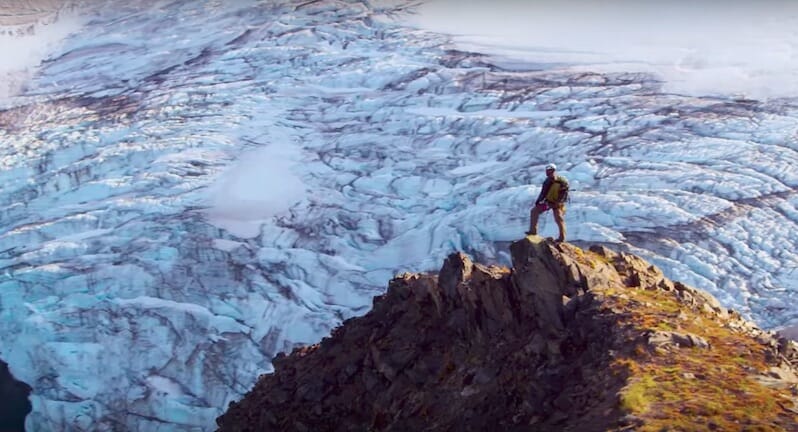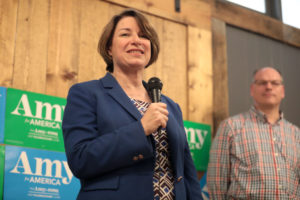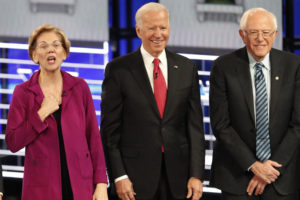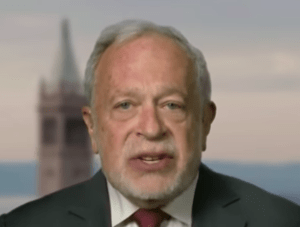‘An Inconvenient Sequel’ Helps Bring Awareness of Climate Change to a New Generation
The follow-up documentary to the 2006 hit is half environmental update and half celebration of all things Al Gore. A scene from "An Inconvenient Sequel: Truth to Power." (Paramount Pictures / YouTube)
A scene from "An Inconvenient Sequel: Truth to Power." (Paramount Pictures / YouTube)
While George W. Bush was mired in the lowest approval ratings of his presidency, former Vice President Al Gore was on his way to becoming the most successful also-ran in history. His climate change documentary, “An Inconvenient Truth,” was a surprise hit in 2006, racking up $50 million worldwide and an Oscar. In 2007, Gore won a Nobel Peace Prize for “efforts to build up and disseminate greater knowledge about man-made climate change, and to lay the foundations for the measures that are needed to counteract such change.”
The movie’s follow-up, “An Inconvenient Sequel: Truth to Power,” to be released Friday, follows Gore, now 69, as he delivers his famous PowerPoint presentation to disquieted civilians and the Climate Reality Leadership Corps, 10,000 concerned citizens from 135 countries who are bent on saving the planet. In the 10 years since the first film, most climatologists’ predictions have come to fruition: Droughts and flooding are more severe, superstorms are more frequent and polar ice caps continue to melt and calve—like the trillion-ton, Delaware-size iceberg that separated from the Antarctic earlier this month.
A visit with glaciologist Konrad Steffen in Greenland illustrates how such epic transformations begin with a trickle of melting ice that morphs into a torrent emptying into the North Atlantic. It might be the very water Gore wrings out of his socks in a later scene after he trudges through the flooded streets of Miami to deliver yet another lecture.
While Sen. Jim Inhofe, R-Okla., compared “An Inconvenient Truth” to “Mein Kampf” and called global warming “the greatest hoax ever perpetrated on the American people,” Gore finds common ground with Trump supporter Dale Ross, the mayor of Georgetown, Texas, which is 100 percent reliant on renewable energy. Ross might appear to be an outlier among conservatives, but it’s not just liberals who have been behind the 275 percent growth in renewables from 2002 to 2012.
Additional comfort can be found in the fact that the cost of solar panels has dropped 60 percent per watt over the past 10 years, which is no doubt good news for Lyndon Rive, co-founder of the nation’s number one solar provider, SolarCity. Rive has a key part in the final act of the movie as Gore makes a last-ditch effort to bring India into compliance with the Paris climate accord of 2015.
That meeting, wherein 195 countries agreed in principle to hold earth’s temperature to 2 degrees Celsius above pre-industrial figures, was deemed a success only after India, the world’s third-largest producer of greenhouse gases behind the U.S. and China, finally signed on after initially abstaining. In a meeting between Gore and India’s minister of energy and power, Piyush Goyal, and then-environment minister Prakash Javadekar, the Indian officials explain their opposition: “I’ll do the same thing (as other signatories) after 150 years. After I’ve used my coal. After I’ve got my people jobs. After I’ve created my infrastructure.” Meanwhile footage shows the feet of Indian pedestrians sticking to the pavement amid blistering temperatures.
“How would you like to be the hero of the Paris climate talks?” Gore asks SolarCity’s Rive, before requesting Rive donate pivotal technology (which the movie fails to identify) to developing countries. The upshot is that after India acquiesces, officials tell Gore that his soliciting of the unspecified solar technology from Rive was the key to the process. Of course, the guarantee of at least $100 billion a year to help developing countries might have had something to do with it, a fact omitted by husband-wife filmmakers Bonni Cohen and Jon Shenk.
The sequence is emblematic of the movie’s greatest weakness. Where the first film is firmly focused on climate issues, the sequel is half climate change update, half celebration of all things Gore.
During Gore’s 24-hour podcast from the Eiffel Tower in the days leading up to the Paris talks, terrorists strike the city, killing 130. It’s a headlining event, but what is it doing in a movie on climate change? It presents an opportunity for the filmmakers to show Gore giving a heartfelt, inspirational speech to his staff and tech crew.
There’s also a sequence wherein Gore boards the golden elevator in Trump Tower for a meeting with the president-elect. No details emerge from their confab, but we can assume the outcome judging from the U.S. withdrawal from the Paris agreement in June of this year. The withdrawal sparked outrage in many sectors both at home and abroad, with Trump noting he “was elected to represent the citizens of Pittsburgh, not Paris,” an incomprehensible statement that, in the minds of many, renders our current president an inconvenient truth.
The convenient truth is that implementation of renewable sources is more abundant than predicted, and according to many experts, the combustion engine likely will become obsolete over the next 10 years. Of course, polar caps continue to melt, and more work needs to be done, but “An Inconvenient Sequel: Truth to Power,” flawed as it is, helps bring awareness to a new generation.
Independent journalism is under threat and overshadowed by heavily funded mainstream media.
You can help level the playing field. Become a member.
Your tax-deductible contribution keeps us digging beneath the headlines to give you thought-provoking, investigative reporting and analysis that unearths what's really happening- without compromise.
Give today to support our courageous, independent journalists.






You need to be a supporter to comment.
There are currently no responses to this article.
Be the first to respond.